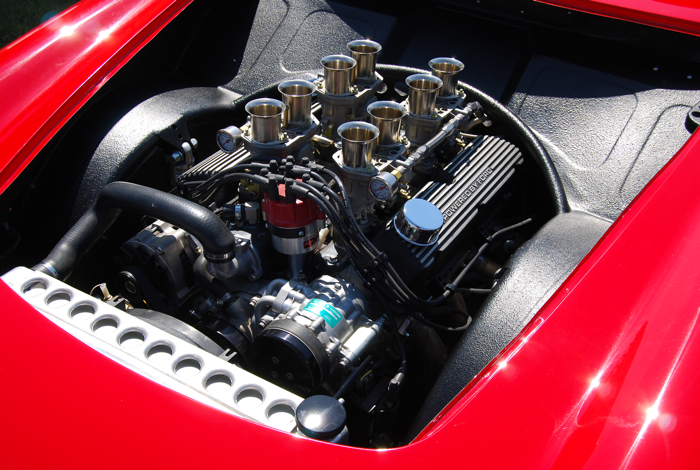Update Your Car with a New Opel Corsa Engine
Update Your Car with a New Opel Corsa Engine
Blog Article
Comprehensive Evaluation of a Subcompact Vehicle's Powertrain Capabilities
In the world of automotive engineering, the powertrain of a subcompact cars and truck stands as an important nexus where efficiency, development, and performance converge. When scrutinizing the elaborate web of elements that propel these cars ahead, one discovers a symphony of engineering marvels waiting to be explored. From the engine's ruthless quest of ideal efficiency to the transmission's seamless choreography of power distribution, every aspect plays a critical duty in specifying the total driving experience. Nonetheless, past the surface area lies a chest of understandings waiting to be uncovered, guaranteeing a deeper understanding of how these powertrains really fare in the realm of practical application.
Engine Performance Analysis
In evaluating the engine efficiency of the subcompact auto, a comprehensive evaluation reveals its performance and power output under different driving problems. The subcompact car's engine, a critical element of its powertrain system, shows extensive performance metrics. The engine's efficiency is remarkable, as it optimizes fuel usage without endangering power shipment. Under typical driving conditions, the engine runs efficiently, showcasing a balance in between efficiency and gas economic climate.
Moreover, when based on extensive testing scenarios such as high-speed velocity or uphill climbs up, the engine demonstrates strength and responsiveness. Its power outcome remains consistent, supplying sufficient acceleration when needed. The subcompact car's engine is customized to satisfy the demands of metropolitan driving, where fast acceleration and active ability to move are crucial.
Additionally, the engine's layout includes modern technologies that enhance its efficiency characteristics. Functions like turbocharging or variable shutoff timing add to enhanced power distribution and torque, improving the total driving experience. To conclude, the engine performance of the subcompact auto emphasizes its capability to deliver efficient and reputable power output throughout various driving problems.
Transmission Effectiveness Analysis
Evaluating the subcompact car's transmission efficiency entails examining its efficiency in transmitting power flawlessly across different driving problems. The performance of a transmission system is essential as it directly affects the general performance and fuel economic situation of the car. In assessing transmission efficiency, aspects such as equipment proportions, shift timing, and the smoothness of gear modifications are thought about. A properly designed transmission system must effectively provide power from the engine to the wheels while reducing energy losses.
One common approach utilized to examine transmission performance is through dynamometer screening, where the power outcome from the engine is measured at the input and outcome shafts of the transmission. Disparities between input and result power can suggest the degree of efficiency of the transmission system. Additionally, real-world driving examinations are performed to assess exactly how the transmission carries out in practical situations. By assessing these facets, engineers can recognize areas for improvement and maximize the transmission system for much better general performance and performance.
Fuel Effectiveness Evaluation
The analysis of the subcompact automobile's gas effectiveness entails an extensive evaluation of its intake prices under different driving problems. Fuel effectiveness is an essential variable in examining the overall performance and cost-effectiveness of a vehicle. By gauging the amount of fuel consumed each range took a trip, commonly shared as miles per gallon (MPG) or liters per 100 kilometers (L/100 click to find out more km), the performance of the subcompact auto's powertrain can be determined.

Furthermore, advancements in innovation, find out here such as crossbreed systems, regenerative braking, and automated start-stop systems, have actually considerably boosted fuel efficiency in contemporary subcompact vehicles. Manufacturers continue to enhance and innovate powertrain parts to boost fuel effectiveness while satisfying performance demands and ecological regulations. Evaluating a subcompact cars and truck's gas efficiency offers beneficial understandings for consumers seeking cost-effective and lasting transportation options.
Acceleration and Handling Analysis
An important facet of assessing the efficiency capacities of a subcompact cars and truck hinges on analyzing its acceleration and handling features. Acceleration is crucial as it identifies exactly how rapidly the automobile can reach desired rates, impacting general driving experience and maneuverability in numerous traffic conditions. opel corsa engine. Subcompact automobiles are usually preferred for their nimbleness and agility, making acceleration from dead stop and throughout surpassing maneuvers essential aspects to consider
When it pertains to dealing with, a subcompact vehicle's ability to browse corners, maintain stability at broadband, and supply a responsive steering feel are extremely important. Tight city streets and winding roadways call for accurate handling to guarantee vehicle driver self-confidence and security. Aspects such as suspension adjusting, weight circulation, and tire grip play considerable functions in identifying a subcompact cars and truck's total handling prowess.

Powertrain Elements Summary
Upon diving into the details of a subcompact cars and truck's performance, a comprehensive assessment of its powertrain parts is important to comprehend the vehicle's mechanical bases. The powertrain of a subcompact car typically consists of the engine, transmission, driveshaft, differential, and axles. Comprehending just how these parts work with each other is crucial in evaluating a subcompact automobile's total efficiency, efficiency, and driving dynamics.
Verdict
In conclusion, the subcompact auto's powertrain abilities have been extensively examined in terms of engine performance, transmission efficiency, fuel acceleration, efficiency, and handling. The thorough evaluation highlights the relevance of each element interacting seamlessly to deliver ideal performance. On the whole, the powertrain parts of the subcompact vehicle have actually been discovered to be well-balanced and effective, making it a trusted choice for motorists seeking a small and fuel-efficient car.
In the realm of automotive design, the powertrain of a subcompact cars and truck stands as an important nexus where efficiency, performance, and technology assemble.In analyzing the engine efficiency of the subcompact car, a comprehensive evaluation reveals its performance and power result under numerous driving problems.Assessing the subcompact vehicle's transmission effectiveness involves assessing its performance in sending power perfectly across different driving problems. Recognizing just how these parts function together is critical in analyzing a subcompact vehicle's total efficiency, efficiency, and driving dynamics.In final thought, the subcompact vehicle's powertrain capabilities have been thoroughly examined in terms of engine performance, transmission effectiveness, gas effectiveness, handling, and velocity.
Report this page